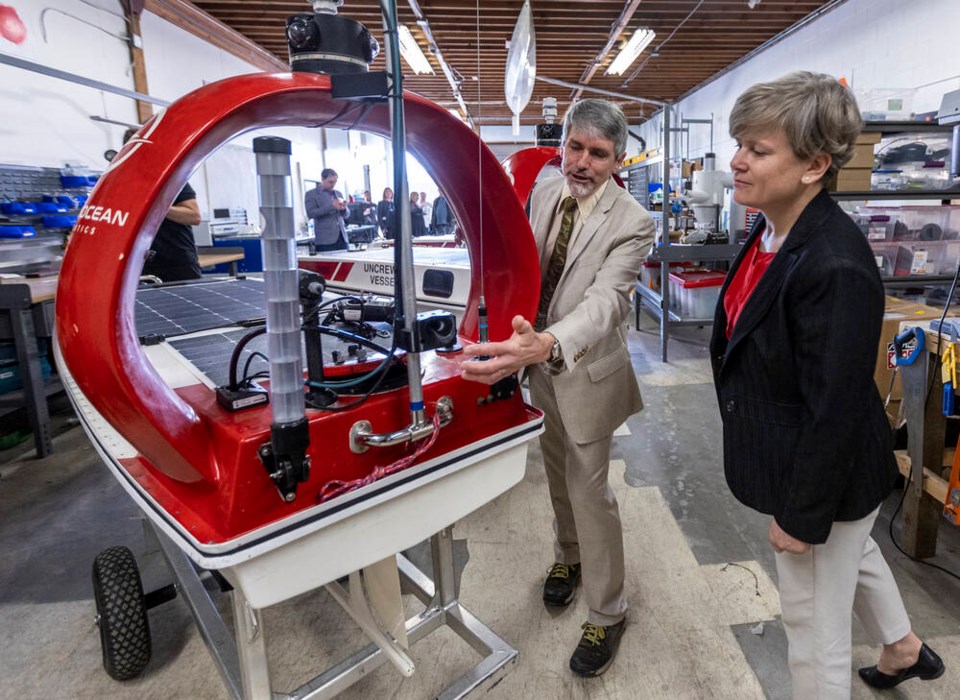A five-year-old Victoria company has received $1.75 million from the province to continue developing solar-powered unmanned vessels to collect data from the ocean and instantly send it to its home base on land.
Open Ocean Robotics’ surface vehicles are equipped with sensors, cameras and communication technology. Out on the ocean, these autonomous vehicles can travel for months, withstand stormy conditions and they do not produce greenhouse gases.
The company is one example of emerging “blue” technology in sa国际传媒
A total of $7 million from the province’s Innovative Clean Energy Fund was announced Tuesday for seven projects.
Julie Angus, chief executive of Open Ocean Robotics, said, “This investment in sustainable ocean technology will help advance the maritime economy and beyond. It will protect oceans, reduce greenhouse gases and increase safety at sea.”
We need to better understand the oceans in order to protect them, Angus said. “We know very little about our oceans and have only touched upon the opportunities in the blue economy.”
The company has a team of 30 and is a global leader in using technology for more sustainable ocean monitoring, she said.
Uses so far include monitoring waters to help protected endangered southern resident killer whales and to combat illegal fishing, Angus said.
Another $2 million went to the South Island Prosperity Partnership’s Centre for Ocean Applied Sustainable Technologies (COAST) to work as a catalyst for the blue economy along the coast. This organization is filling a gap in the marine sector by connecting emerging technologies to shipping, shipbuilding, and defence and aerospace industries.
Emilie de Rosenroll, chief executive of COAST, said the organization is bringing stakeholders together to develop competitive advantages.
Josie Osborne, minister of Energy, Mines and Low Carbon Innovation, said this work will help the province transition to a low-carbon economy.
Since 2008, the innovative clean energy fund has provided $112 million to support clean-energy projects. “Reducing greenhouse gases and other pollution is critical to meeting our climate goals” within sa国际传媒’s climate action plan, Osborne said.
“The impacts of climate change are all around us and people in sa国际传媒 know that delay is not an option.”
Other projects receiving funds:
• Pani Energy of Victoria uses artificial intelligence to optimize water-treatment infrastructure to cut energy use by up to 10 per cent and reduce chemical use by 10 per cent.
• Axine Water of Vancouver develops and sells electrochemistry technology. Its waste-water treatment system features improvements in hardware and software.
• Ecoation Innovation of North Vancouver is aiming to develop and demonstrate technology for greenhouses to reduce pesticide use and increase yield from crops.
• Terramera of Vancouver focuses on creating remote-sensing and data-enabled verification technology to give accurate estimates of soil carbon and a history of how a specific piece of land has been farmed in the past.
‘• Miru Smart Technologies of Vancouver creates electromagnetic windows that tint electronically. This translates to energy savings and reduces greenhouse gas emissions.
>>> To comment on this article, write a letter to the editor: [email protected]



